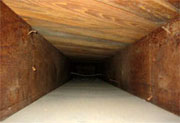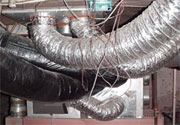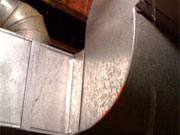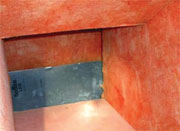In Business Since | License #
In Business Since | License #

Ducts come in many sizes and shapes and can be made of a variety of materials. Because all homes are different, it's important to understand what you're working with before embarking on ductwork.
Dr. Energy Saver dealers can inspect your ducts and, based on their state and material, come up with a solution guaranteed to stop air leaks. Get in contact with your local dealer today!
Building cavities

Building cavities. The open spaces between studs and joists are often used as part of a home's ductwork system. Taking advantage of building cavities is an attractive option for builders, because it saves money.
While this type of duct can be fairly airtight (little or no leakage), the wood and wallboard inner surfaces are coarse enough to impede air flow.
Flexible ducts

Flexible non-metallic ducts. These large-diameter, wire-reinforced ducts can be used in long lengths, and have enough flexibility to snake around obstacles. Flex ducts are popular in attics and in any cramped space.
Long lengths eliminate the need for many joints, but leaks can occur where flex duct joins sheet metal registers or other types of ductwork. Flex ducts can be torn, cut and crushed, so careful handling is important.
Sheet metal

Sheet metal. Made from galvanized steel, these ducts can be rectangular or round. One duct section usually slides into another. Leaks typically occur where sections join.
Duct board

Fiberglass duct board. Often used to form large-section trunk lines that feed smaller ducts, fiberglass duct board is insulated (around R-4.5 for 1-inch-thick board) and has a smooth finish to promote good air flow.
It doesn't matter what type of ductwork you have around your home - Dr. Energy Saver can help you with any of your ductwork needs. We can test for leaks and seal them. We can also insulate ducts to improve comfort and home energy savings.
Looking for a price? Get a no cost, no obligation free estimate.